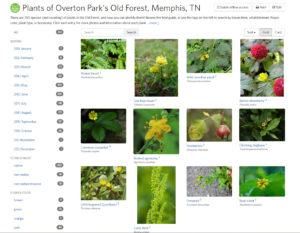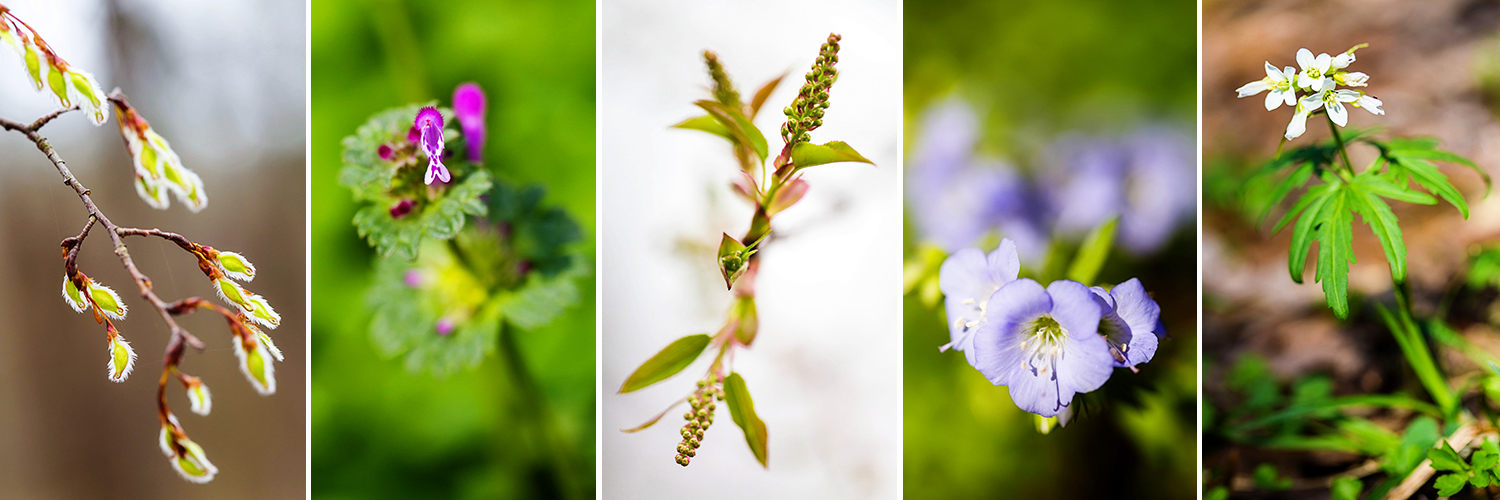Your online field guide to the Old Forest
It’s that time of year again. You’re strolling through the Old Forest, taking in the beautiful spring colors and sounds, and becoming enchanted by a different wildflower around every corner. You stop and look at a stunning golden flower, and think to yourself, “I wonder what that’s called!”
Wonder no more. Today we’re excited to introduce you to an online field guide devoted exclusively to the flowering plants of the Old Forest–350 of them, to be exact.
Using the iNaturalist citizen science platform, we’ve taken the results of Tom Heineke’s 2009 floristic survey of the Old Forest and put them into a visual guide with photos and information about each plant. This incredible information was previously only available in a PDF document, but now it springs to life. Here are just some of the features of the guide:
- It’s sortable. Each entry is tagged with information like whether the plant is a tree, vine, or wildflower; the month(s) its flowers are in bloom; the color of those flowers; and whether it’s native to our area. If you’re looking for a yellow flower that blooms in March, click the “(03) March” row under Bloom Month, then hover over “white” under “Flower Color” until a green plus sign appears. You’ve just narrowed your search to the nine plants that might have yellow blooms in March!
- It’s hyper-local. To create this guide, our resident shutterbug and Director of Communications Melissa McMasters combed the Old Forest in search of all 300+ plants from the Heineke survey. While she didn’t find them all, she did uncover 11 that weren’t on the list, and she took thousands of photos. So many of the photos you see accompanying these entries were taken right here in Overton Park.
- It’s a living document. When you visit a plant’s entry page, you’ll see an “iNat map” that shows you the locations where someone has observed this plant within Overton Park. That means YOU can contribute to this guide! When you snap a photo of a plant in the park and upload it to iNaturalist as an observation, you’re contributing to the data we have about the park. This is especially helpful when you see a plant that we’ve marked “non-native invasive.” We need to know where you’ve found these plants so that we can eradicate them! When you use iNat on your phone, it will automatically tag the location of any observation you make. We’re going to have a tremendous opportunity for you to get familiar with iNat and record tons of data about the park at our April 9 BioBlitz…but more about that later.
 Best of all, you don’t have to wait until you get home to use this guide–it works while you’re in the field. Visit the App Store on your phone and download the free iNaturalist app. Once it’s installed, tap the menu icon and choose “Guides.” If you’re here in Tennessee, you can tap “Nearby” and our guide should automatically pop up in a list. If it doesn’t auto-populate, type “Overton Park” in the “Search Guides” box. Once you’ve loaded the guide, you can browse the entries, or tap the menu bar to sort by tags.
Best of all, you don’t have to wait until you get home to use this guide–it works while you’re in the field. Visit the App Store on your phone and download the free iNaturalist app. Once it’s installed, tap the menu icon and choose “Guides.” If you’re here in Tennessee, you can tap “Nearby” and our guide should automatically pop up in a list. If it doesn’t auto-populate, type “Overton Park” in the “Search Guides” box. Once you’ve loaded the guide, you can browse the entries, or tap the menu bar to sort by tags.
Please take a look around and get to know some of the beautiful plants that call our park home. We’ll be talking a lot in the coming weeks about iNaturalist, which we’ll be using to record observations of plants, birds, fungi, and lots and lots of insects during the BioBlitz celebration. The data we collect that day will help us to create field guides to the forest’s birds and insects, so there’s much more to come! If you have comments or questions about the guide, give Melissa a shout at [email protected].




